
A Musician’s Journey
It always starts the same way.
You’ve got a few instruments, maybe a computer, maybe not.
You’ve got ideas.
And… you’ve got cables. Lots of them.
One day, you decide: “I want everything to work together, smoothly, without fuss.”
That’s when you step into the world of MIDI connectivity — and into the CME lineup.
When You Need a USB Host?
Think of a USB Host as the host of a party. Without one, your USB MIDI devices just stand there, holding drinks, not talking to each other. Your host greets them, introduces them, and makes sure they can share stories — or in this case, MIDI messages.
If your setup doesn’t involve a computer, or if you want your gear to talk directly to each other, a USB Host is essential.
It lets your USB keyboard control your sound module, your drum pads trigger your synths, or your digital wind instrument play a rack of modules — no laptop in sight.
That’s where H4MIDI WC and H2MIDI Pro enter the story.
Powerful Host
The H4MIDI WC is like a seasoned bandleader. It’s got 2 MIDI INs, 2 MIDI OUTs, up to 8 USB HOST ports for your gear, plus 4 USB CLIENT ports to talk to your computer. It can even add Bluetooth MIDI with an optional WIDI Core module — perfect for cable-free creativity.
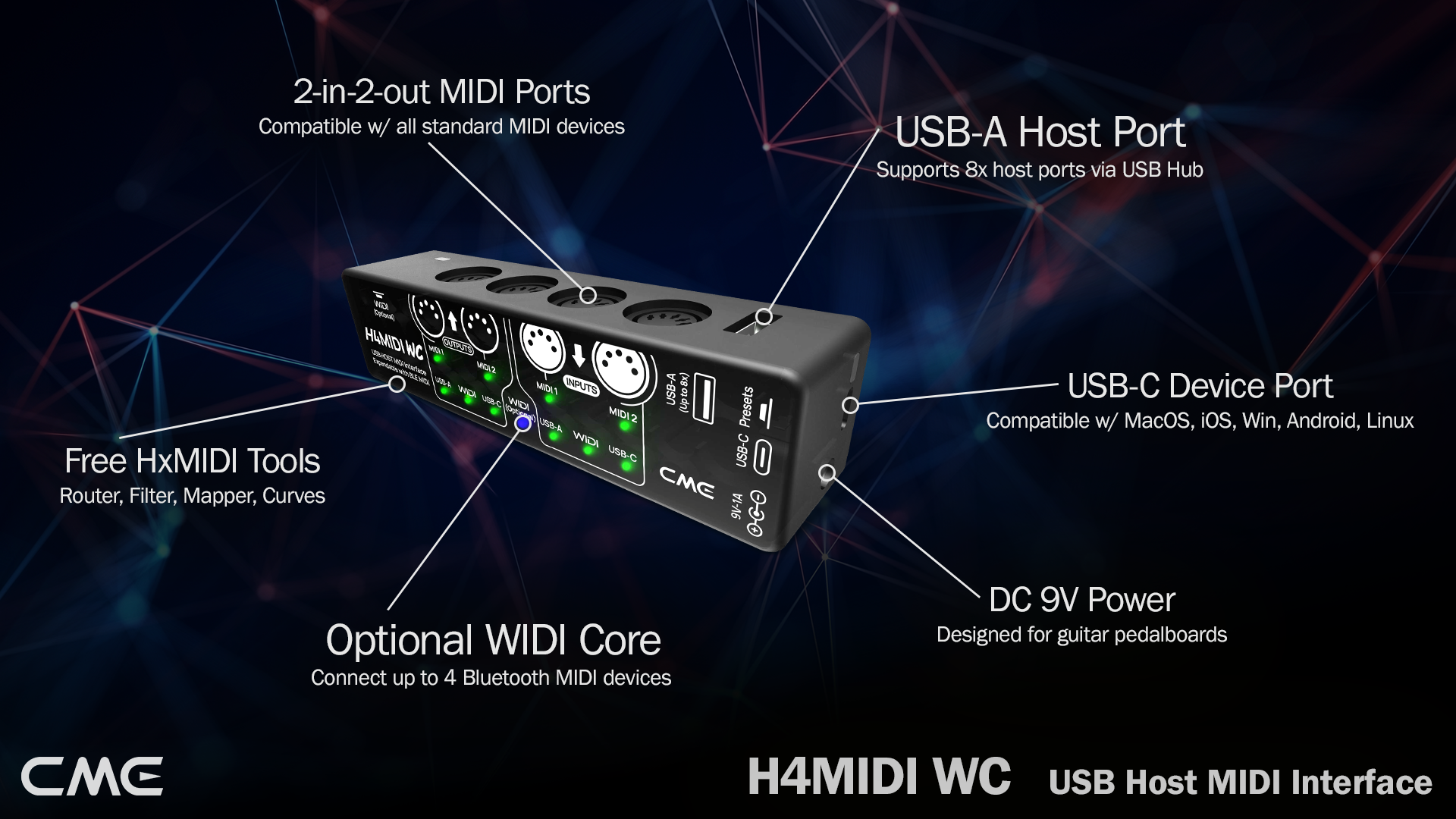
Compact Host
The H2MIDI Pro, on the other hand, is the minimalist virtuoso. Same ultra-precise 32-bit processing, same HxMIDI Tools magic for routing, filtering, and mapping — but smaller, lighter, with 1 MIDI IN, 1 MIDI OUT. It still hosts up to 8 USB devices through a hub, but fits in the palm of your hand.

Tip from the field:
- If you’re building a pedalboard rig or running multiple USB controllers, the H4 is your hub.
- If you’re traveling light or just need one USB keyboard to control a module, the H2 keeps things tidy.
- Both units are powered by HxMIDI Tools, so you get the same advanced routing, filtering, and mapping regardless of size — it’s all about how much I/O and physical connectivity you need.
Header | H4MIDI WC | H2MIDI Pro |
|---|---|---|
Price | US$ 69.99 | US$ 49.99 |
USB-A Host | 1x // 8-in-8-out virtual | 1x // 8-in-8-out virtual |
USB-C Client | 1x // 4-in-4-out virtual | 1x // 2-in-2-out virtual |
MIDI I/O | 2-in / 2-out | 1-in / 1-out |
Router, Filter, Mapper | HxMIDI Tools | HxMIDI Tools |
Presets | 4 | 4 |
5V USB Power | Yes | Yes |
9V DC Power | Yes | Yes |
MIDI Channels | 128 | 128 |
Bluetooth MIDI | Optional via WIDI Core | No |
Interfaces That Can Go Solo
Some devices are happy to work only when a computer is around — like session players who need a conductor before they play a note. But others are independent performers. They’ll take the stage, connect all your MIDI hardware, and keep the music flowing without a single laptop in sight.
Meet the U6MIDI Pro and the U4MIDI WC.
Plug them into a computer, and they’re powerful USB MIDI interfaces. Unplug the computer, power them up, and they become standalone MIDI brains — handling routing, merging, filtering, and mapping all by themselves.
Routing lets you take full control of your MIDI signal path — send one keyboard to two synths at the same time, capture MIDI from multiple controllers, and still control other hardware directly without having to route everything through your computer’s operating system.
With filtering, you can clean up your MIDI stream — block unwanted clock messages, strip out aftertouch you don’t need, or silence certain control changes that clutter your mix.
With mapping, you can reassign any control to anything you want — turn a knob into a program change switch, swap channels between devices, or remap pads to trigger new sounds instantly.
More MIDI I/O
The U6MIDI Pro is the heavyweight here: 3 MIDI INs and 3 MIDI OUTs (that’s 48 channels over DIN alone), plus another 48 channels via USB-C. Perfect for complex rigs where multiple controllers and sound modules need to talk at once.
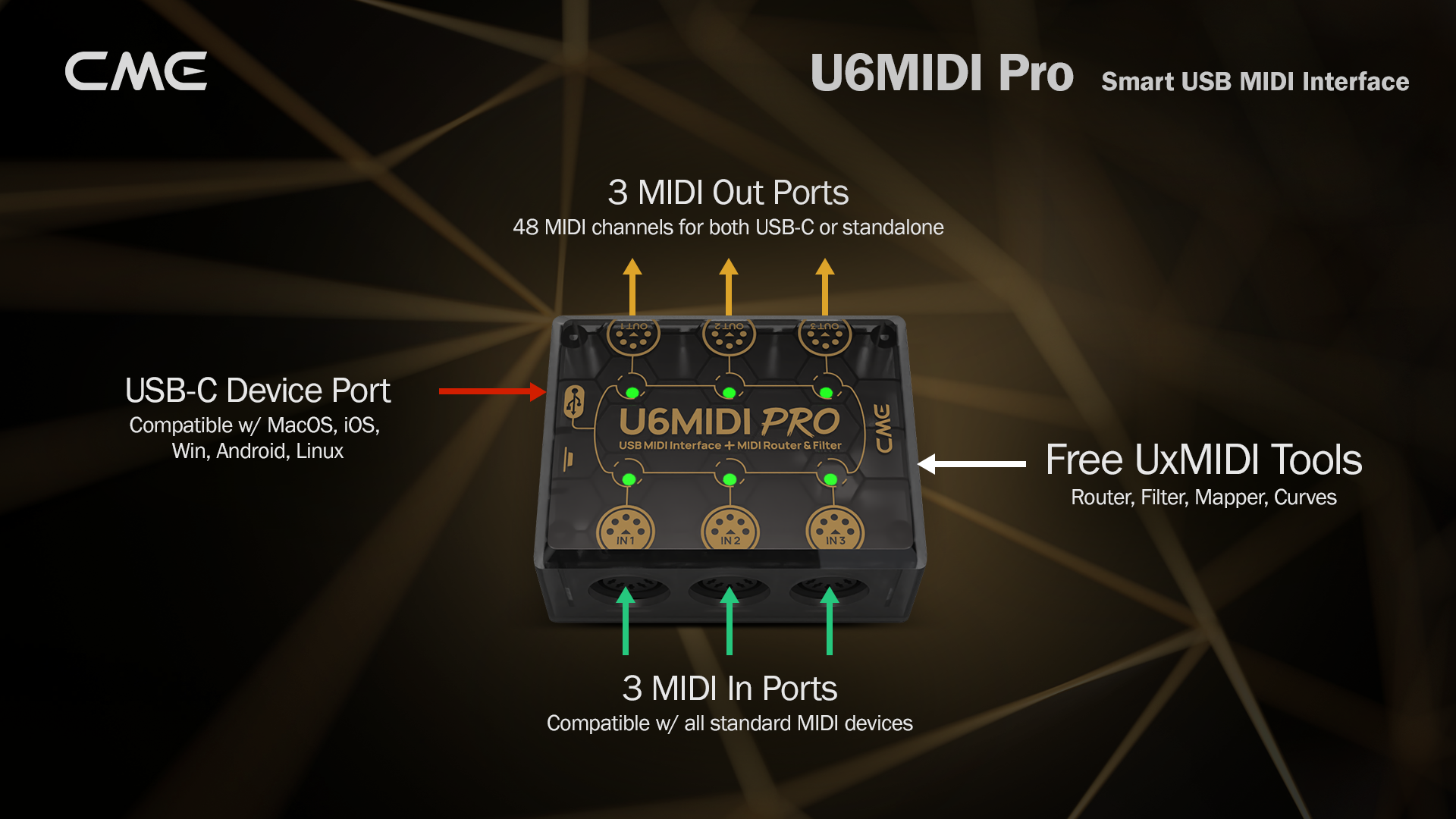
Add Bluetooth MIDI
The U4MIDI WC keeps it lean with 2 MIDI INs and 2 MIDI OUTs, but adds the flexibility of optional Bluetooth MIDI via WIDI Core for ultra-low latency wireless setups. Its smaller footprint is perfect for a desktop, live rig, or pedalboard where space is tight.
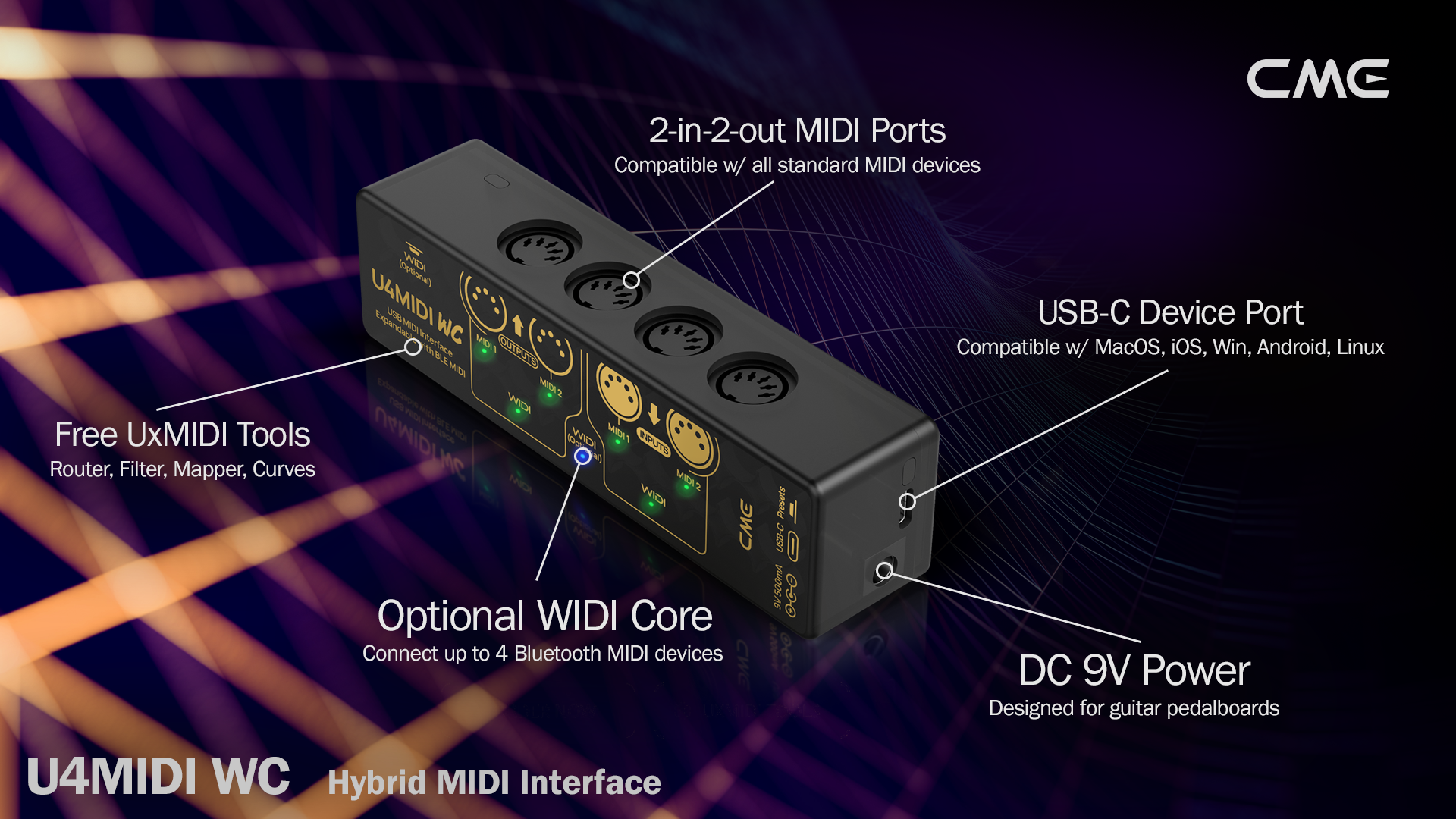
Tip from the field:
- If you’re running a large studio rig with several MIDI controllers, sound modules, and complex signal paths, the U6MIDI Pro is your command center.
- If you’re on the move, building a compact live setup or pedalboard, the U4MIDI WC gives you the same advanced control in a smaller, lighter form — with the bonus of optional Bluetooth MIDI for cable-free performance.
- Both units are powered by UxMIDI Tools, so you get identical advanced routing, filtering, and mapping capabilities. The difference comes down to how much I/O you need and whether wireless connectivity is part of your workflow.
Header | U6MIDI Pro | U4MIDI WC |
|---|---|---|
Price | US$ 49.99 | US$ 49.99 |
USB-C Client | 1x // 3-in-3-out virtual | 1x // 3-in-3-out virtual |
MIDI I/O | 3-in / 3-out | 2-in / 2-out |
Router, Filter, Mapper | UxMIDI Tools | UxMIDI Tools |
Presets | 4 | 4 |
5V USB Power | Yes | Yes |
9V DC Power | No | Yes |
MIDI Channels | 48 | 48 |
Bluetooth MIDI | No | Optional via WIDI Core |
The Smart Cable Trick
In MIDI setups, the simplest tools often become the most essential — and nothing is simpler than a cable. But what if that cable wasn’t just a passive link, and could actually think for itself? Not all cables are created equal.
A smart MIDI cable can do more than just pass notes; it can filter unwanted data, remap controls, and even work without a computer in the middle.
That’s where the U2MIDI Pro and C2MIDI Pro come in.
Both look like regular cables, but both hide powerful routing, filtering, and mapping features under the hood thanks to UxMIDI Tools.
Simple Yet Powerful
The U2MIDI Pro is a 1-in/1-out USB MIDI cable with a secret: Plug it into a computer and run UxMIDI Tools, and you can remap messages, filter unwanted data, or split signals. Even without UxMIDI Tools connected, it remembers your settings.
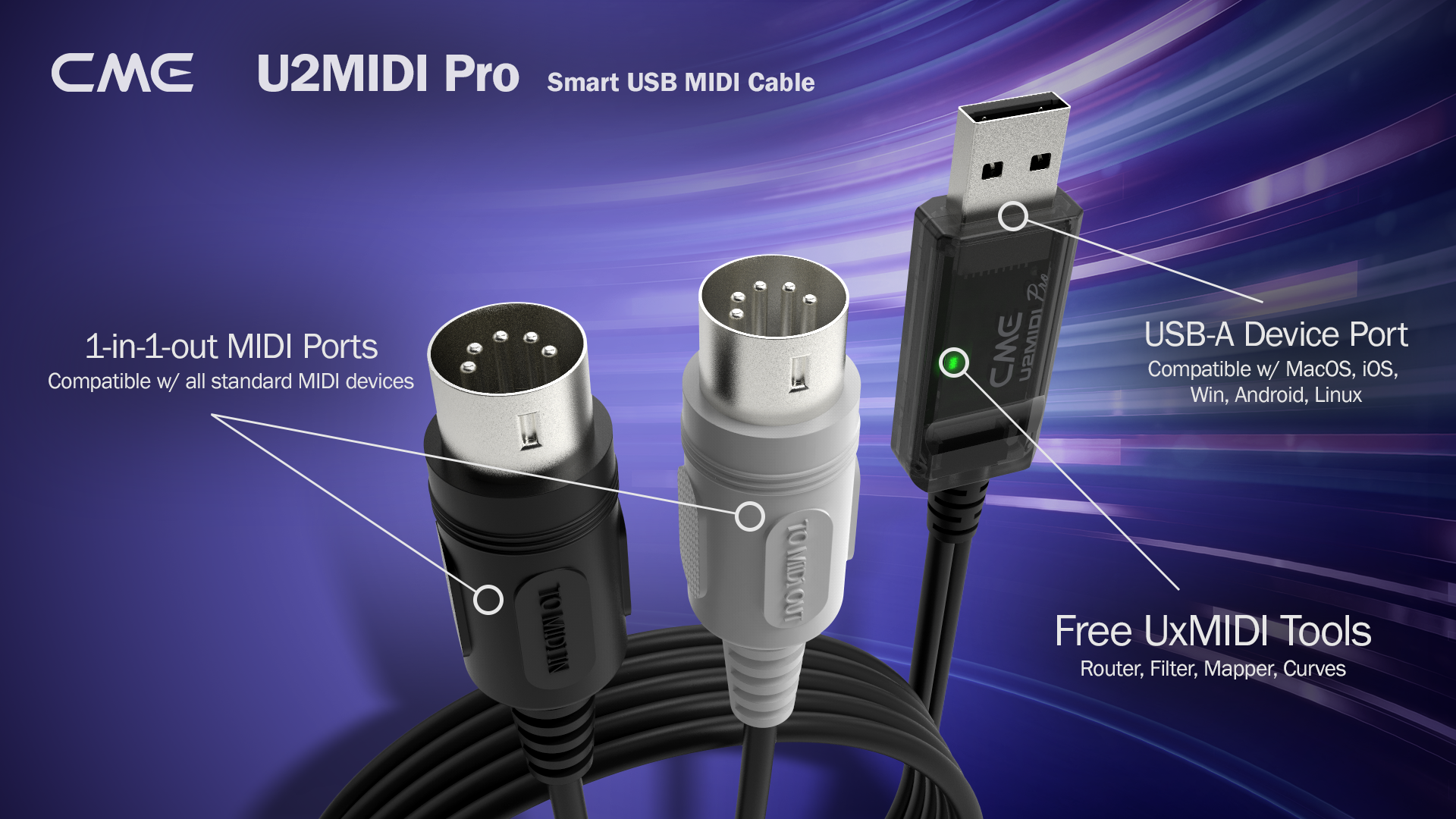
Next Level MIDI Cabling
The C2MIDI Pro takes it further. It’s a dual-function cable — use it as a USB-C MIDI interface for your OS, or connect two MIDI devices directly in standalone “smart MIDI cable” mode. It powers itself from the MIDI OUT port and can store two presets.
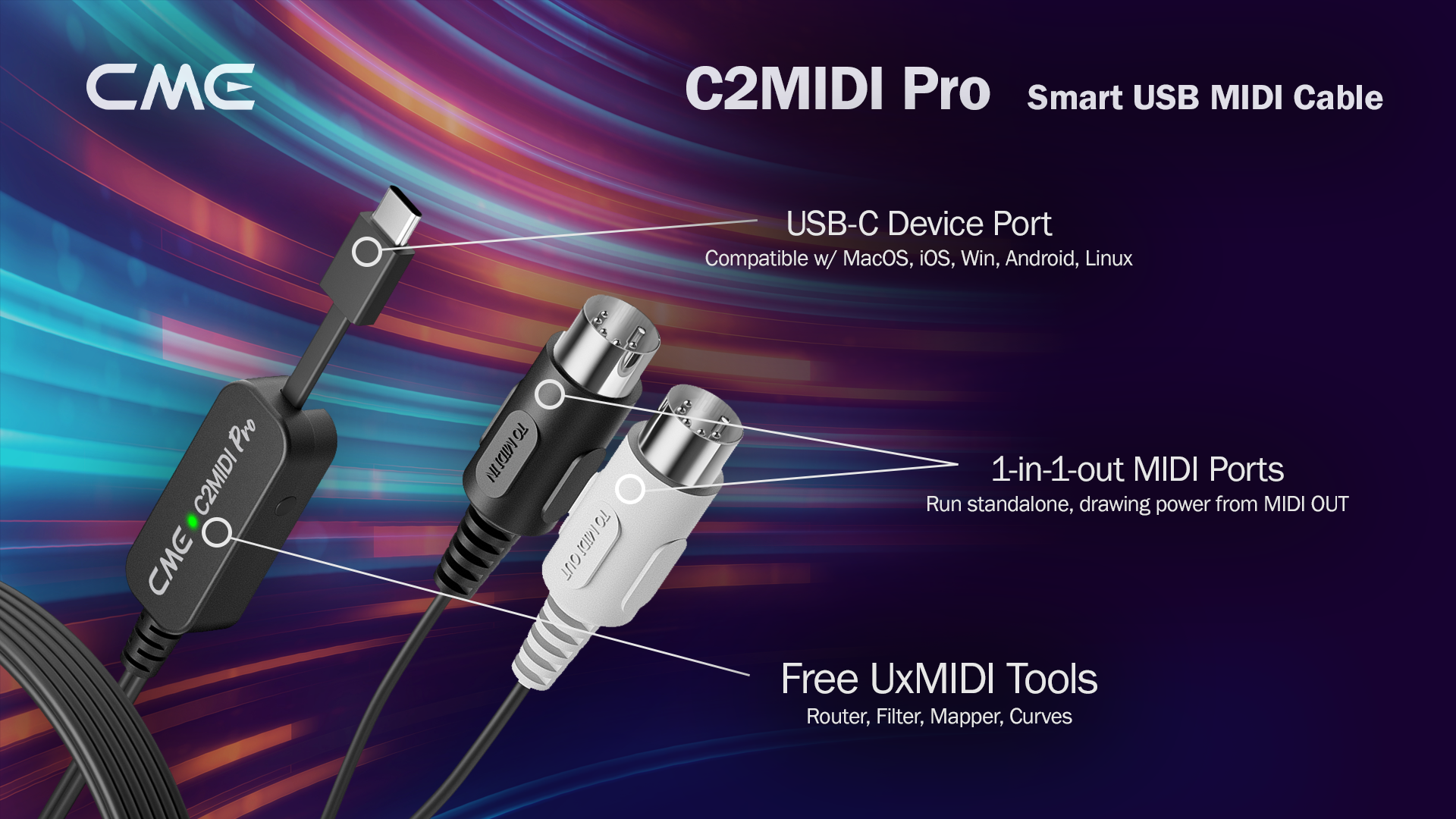
Tip from the field:
- If you need a simple, reliable USB-to-MIDI connection with the ability to filter, map, and route when required, the U2MIDI Pro is your go-to cable.
- If you want extra flexibility — using it as both a USB-C MIDI interface for your computer and a standalone smart cable between two MIDI devices — the C2MIDI Pro gives you that dual-mode power.
- Both cables use UxMIDI Tools for advanced routing, filtering, and mapping, so the real choice is whether you want single-purpose simplicity or all-in-one versatility.
Header | U2MIDI Pro | C2MIDI Pro |
|---|---|---|
Price | US$ 19.99 | US$ 29.99 |
USB Client | USB-A // 1-in-1-out virtual | USB-C // 1-in-1-out virtual |
MIDI I/O | 1-in / 1-out | 1-in / 1-out |
Router, Filter, Mapper | UxMIDI Tools | UxMIDI Tools |
Presets | 2 | 2 |
5V USB Power | Yes | Yes |
MIDI OUT Power | No | Yes |
MIDI Channels | 16 | 16 |
When You Need to Multiply — MIDI Thru
Sometimes you don’t just want one synth to respond — you want an entire wall of sound.
That’s where MIDI Thru boxes step in. They take a single incoming MIDI signal and perfectly duplicate it to multiple outputs, delivering each copy with no added delay, jitter, or data loss.
CME’s MIDI Thru interfaces aren’t USB MIDI devices in the traditional sense — they’re not designed to connect your gear to a computer. Instead, they’re dedicated to powering and protecting your MIDI signal path.
That’s why the USB-C connection is for power only, not for carrying MIDI data. It ensures a clean, stable supply without relying on any operating system.
Inside, they use high-quality opto-couplers — components that isolate each output electrically from the input.
This separation is critical: if one connected device develops a fault, produces noise, or creates a ground loop, the opto-coupler acts like a gatekeeper, stopping that interference from affecting the rest of your setup. It’s your MIDI signal’s built-in insurance policy for reliability on stage or in the studio.
Straight-forward Splits
The MIDI Thru5 WC is your go-to for pure, rock-solid wired connections. It takes one MIDI input and delivers it flawlessly to up to five separate outputs, making it perfect for linking multiple synths, sound modules, and effects processors in a studio rack or live rig. No lag, no jitter — just clean, reliable MIDI across your entire setup.
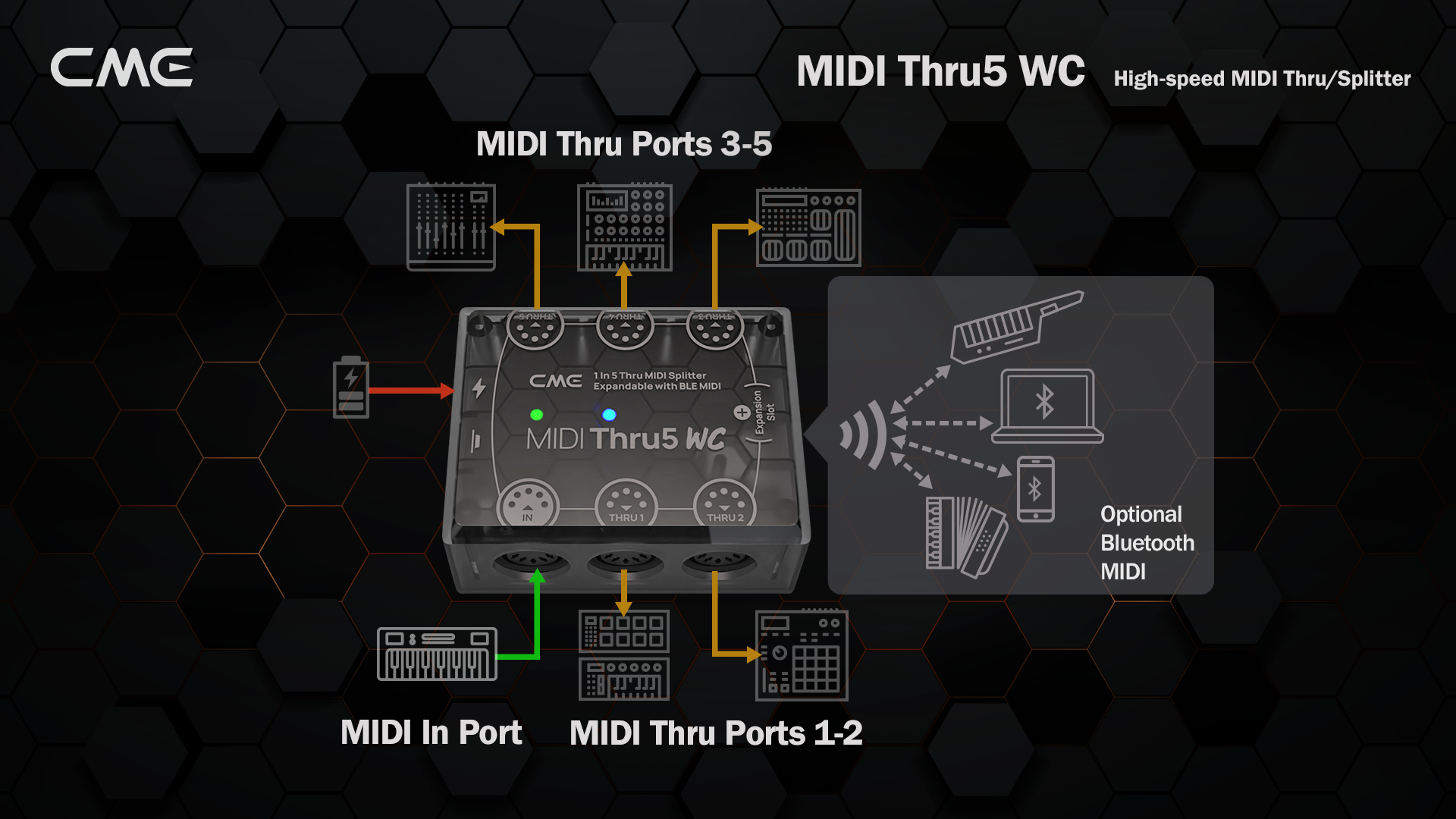
Advanced Bluetooth MIDI
The WIDI Thru6 BT takes that same wired stability and adds a hybrid twist. Alongside five wired outputs, it features built-in Bluetooth MIDI with ultra-low latency (as low as 3 ms), so you can connect wirelessly to controllers, iPads, laptops, or other WIDI-enabled gear. It’s ideal for performers who want the security of wired gear and the freedom of wireless control — all from the same box.
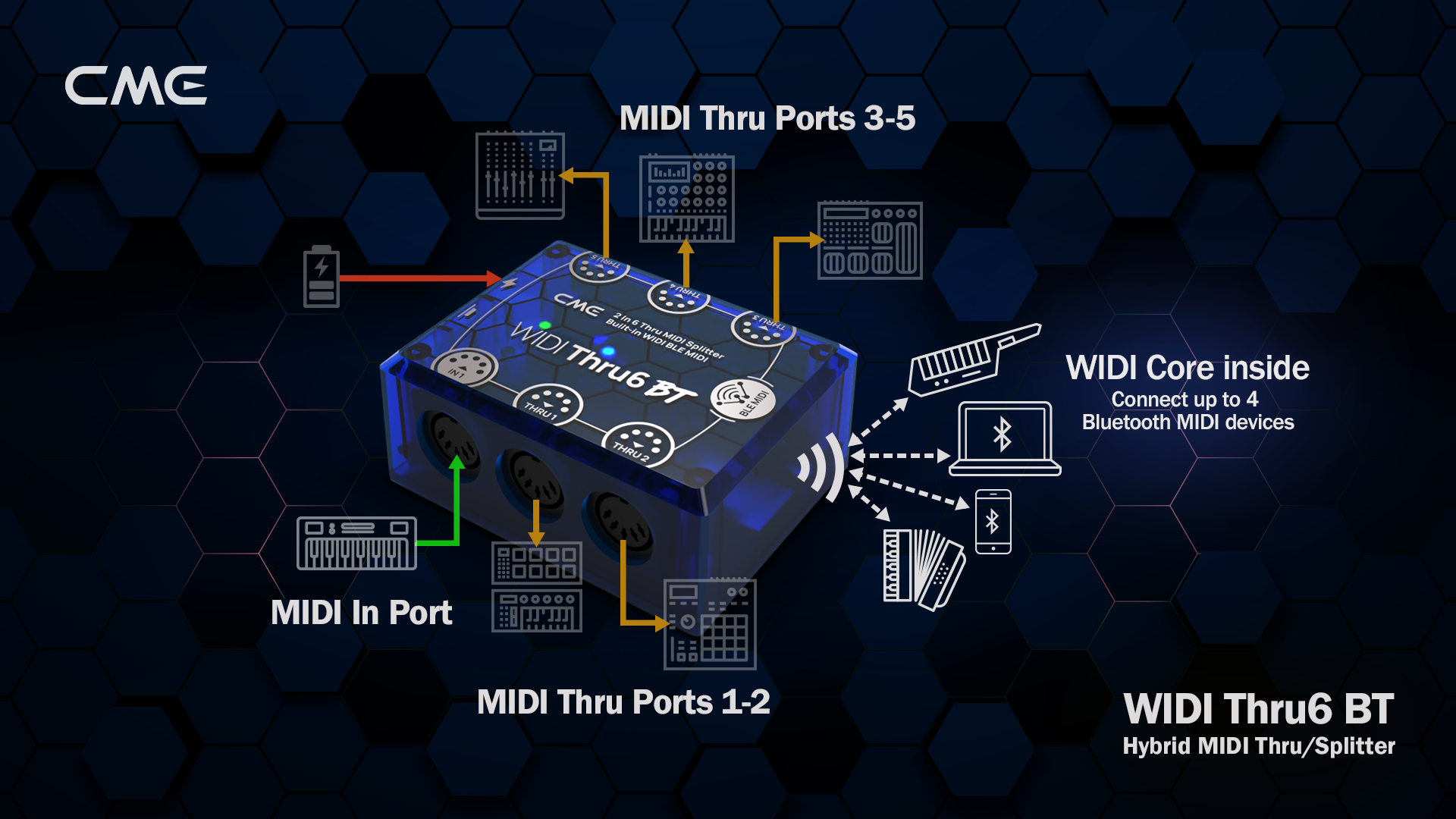
Tip from the field:
- If your setup is permanently wired — for example, a studio rack where every synth has its own dedicated MIDI line — the MIDI Thru5 WC gives you bulletproof reliability with minimal complexity.
- If you want the option to add wireless gear to the mix — whether that’s an iPad running soft synths, a Bluetooth controller, or another WIDI-enabled device — the WIDI Thru6 BT combines the same wired stability with the flexibility of ultra-low latency Bluetooth MIDI.
- Both units are powered via USB-C for clean, stable power, and use high-quality opto-couplers to keep your signal isolated and interference-free. The real choice is whether your workflow is wired-only or hybrid wired/wireless.
Header | MIDI Thru5 WC | WIDI Thru6 BT |
|---|---|---|
Price | US$ 39.99 | US$ 69.99 |
MIDI I/O | 1-in / 5-out | 1-in / 5-out |
Bluetooth MIDI | Optional via WIDI Core | 1-in / 1-out |
5V USB Power | Yes | Yes |
MIDI Channels | 16 | 16 |









ever have voltage conflicts from old midi to usb ?
Not that I am aware of.